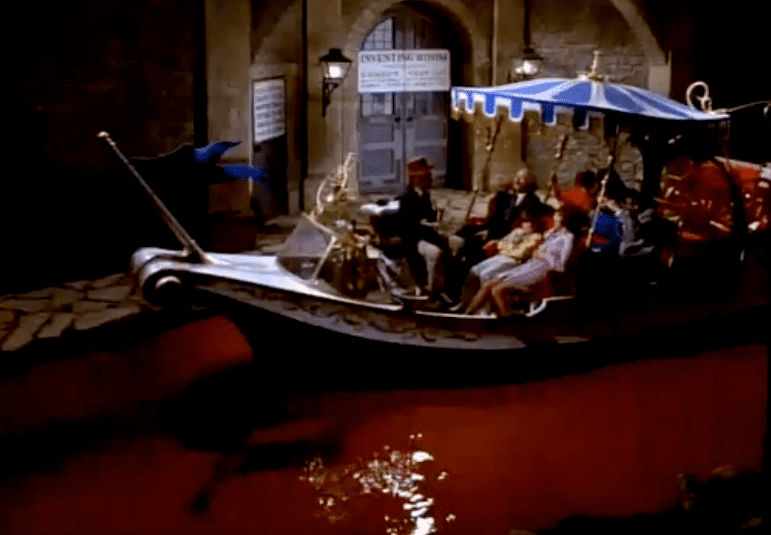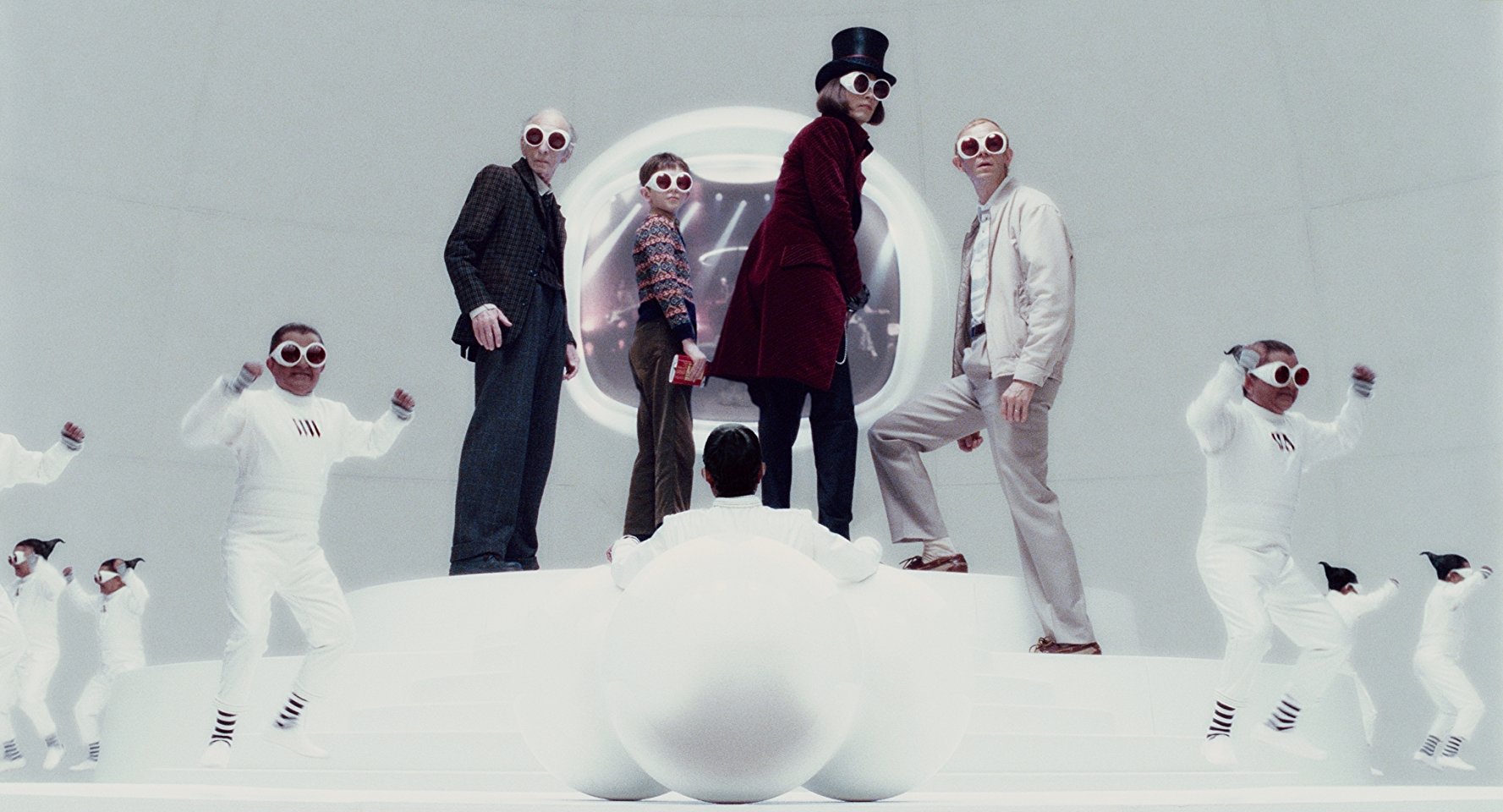Once You Start Believing In Pure Imagination, College Football’s Handling of Covid-19 Makes Perfect Sense

I’ll admit that I was skeptical at first.
With the early disastrous reports of athletes returning to campus and the sheer number of positive Covid-19 tests, I was starting to wonder whether college football really had anyone competent in charge.
Then my family and I rewatched two movies this weekend, “Willy Wonka and the Chocolate Factory,” the 1971 movie starring Gene Wilder, and “Charlie and the Chocolate Factory,” the gritty 2005 Tim Burton reboot starring Johnny Depp. Both are somewhat based on the series of Roald Dahl’s children’s books.
Once I finished with both movies, so much made sense.
You see, I started to understand that Willy Wonka is not only alive and a real person – I also started to understand that the only possible explanation as to why college football has undertaken such a fairy-tale response to this pandemic is that Willy Wonka is running this show for the NCAA and the schools of the Power Five.
I know, I know. You’re not convinced. But close your eyes, hold your breath, count to three, and then you’ll see. Belief in their own imagination is the only way this response to the pandemic could have been greenlit.

Wonka Chocolates And The NCAA
Once upon a time, I thought the athletic directors of the Power Five and the NCAA had the best interests of the students at heart. I thought that although the NCAA was imperfect, and the Power Five athletic directors were imperfect, I thought that at the end of the day, they were there to give the students and athletes a rich and rewarding educational experience. Many are former athletes themselves.
But then again, according to the 2005 Tim Burton movie, Grandpa Joe used to believe that Willy Wonka had his best interests at heart as well. By all outward appearances, he was a good worker at his candy factory, and even though Willy Wonka was imperfect, he was providing Grandpa Joe Bucket a good career and a livable wage.
Then Willy Wonka and the schools of the NCAA began to realize that the people who provide their product were expendable.
When competitors stole his candy secrets, Willy Wonka closed the factory and instead chose unpaid labor – the Oompa-Loompas – to provide the chocolate. (Grandpa Joe became destitute.) Somewhere, when you re-read the books, you wonder if Willy Wonka had in his mind when he switched to free labor over paid labor, I need the money!
And a few months after Covid hit, too, many athletic directors’ instincts didn’t seem to be to try to protect the student-athletes from contracting this deadly disease which has killed more than 110,000 Americans. It was instead – how can we keep the candy rolling off the assembly lines? We have all this unpaid labor. Let’s just order them back to campus to work out. We need the money!

Imaginary Thinking
A big assist in both Willy Wonka’s and the NCAA’s thinking is an overriding belief in pure imagination.
In Wonka’s case, his belief in imagination allowed him to create a magical factory that made crazy products that seem to defy reality. Of course, being a work of imaginative fiction, he was able to achieve these goals.
Unfortunately for the athletic directors of the Power Five, their belief in pure imagination ran into the brick wall of the reality of Covid-19.
Athletic directors, perhaps either believing their own version of reality or ignoring the word of subject-matter experts like Dr. Anthony Fauci, started to believe that managing Covid-19, unpaid athletes and a staff of hundreds – that there’s no… thing…. to… it….
Somewhere, the fiction that the virus would go away in warm weather took hold, more of a hope than a fact. Entire plans seemed to be made based on “facts” about the virus that seemed made up – that it would be gone in the summer. Maybe some over-the-counter solution – maybe eating a Wonka bar a day! – would slow or prevent the virus from happening! Maybe a vaccine will magically be done by July 15th, faster than the development of any vaccine in human history!
What’s shocking, though is that these hopes and dreams somehow became a plan where athletes would put themselves in harm’s way returning to campuses to get ready for a season.
In the best of times, college athletes do irresponsible things. I’ve been covering Lehigh football for almost twenty years and I’ve seen my share of things that have happened – mono, the flu, Lyme disease. None of these are Covid, but it does show the magical thinking involved to actually believe that any institution, college or pro, can sequester a set of athletes in a single geographic area and then control their every moves for the sake of the program.
Sadly, it seems like a Wonka-like belief in imagination has replaced an actual fact-based strategy for managing athletes and the coronavirus right now.

Where Are We Going?
When we rewatched the Chocolate Factory movies, I was struck by the way the movies and Ronald Dahl showed considerable doubt about Willy Wonka’s grip over the goings-on at the factory.
There’s no earthly way of knowing
Which direction we are going
There’s no knowing where we’re rowing
Or which way the river’s flowing
Is it raining, is it snowing?
Is a hurricane a-blowing?
Not a speck of light is showing
So the danger must be growing
Are the fires of Hell a-glowing?
Is the grisly reaper mowing?
This song could easily apply to the Power Five’s attitude towards their athletes and Covid.
Is there a plan to keep kids safe? Is there a plan to stop outbreaks? How do you position drills? Do you sanitize equipment after each use? When a kid tests positive, do you shut things down? Do you isolate the kid with the postive test? What about the entire position group?
Maybe this was a day when the furnace wasn’t lit!
Were teams really going to take cross-country flights to play games against strangers, exposing them to teams that may or may not have taken the thread of Covid-19 as seriously as them, then fly back to campus – and possibly expose other students or faculty?
If we squeeze all the juice out of her, she’ll be back to normal!

Was the prospect of taking moving images of athletes competing, breaking up those images into millions of tiny pieces, and transferring them across the internet to reassemble in households across the country worth the risk of kids possibly catching this disease and having long-term health problems?
I don’t wish to alarm you, but it does sometimes happen that only about half the little pieces find their way into the television set. Which half of your son would you want back?
Is the danger growing – if not to athletes, but possibly vulnerable members of the coaching staff or support people? Is the grisly reaper mowing?
The answers might be achievable to these questions, but members of the Power Five athletic departments haven’t provided any because their athletic directors and athletic departments, who ostensibly have the best interests of their student-athletes at heart, haven’t provided them.
In the past I have tended to cut the NCAA and athletic directors a lot of slack on these matters because I mostly felt that on the whole, individual programs cared more about their athletes than the money. But seeing how many programs have resumed workouts in defiance to the science, I realize how wrong I was to trust many of these programs to do the right thing.
It looks like they see their athletes as Willy Wonka looks at the Oompa-Loompas – unpaid, expendable workhorses.
College football desperately needs a leader that has the best interests of the athletes and the sport at the forefront of their priority list. They need to be studying the disease, trying to find realistic ways to manage the season. If a season needs to be cancelled for 2020 because it’s impossible to play games safely, someone involved in the sport needs to stand up and say so.
We don’t need Willy Wonkas. We need people who will tell the truth.

Chuck has been writing about Lehigh football since the dawn of the internet, or perhaps it only seems like it. He’s executive editor of the College Sports Journal and has also written a book, The Rivalry: How Two Schools Started the Most Played College Football Series.
Reach him at: this email or click below:
